We Need Dirty Harry
In any situation when every second lost could mean another child lost, he would take the risk of entering, because risking his life to save others was his job.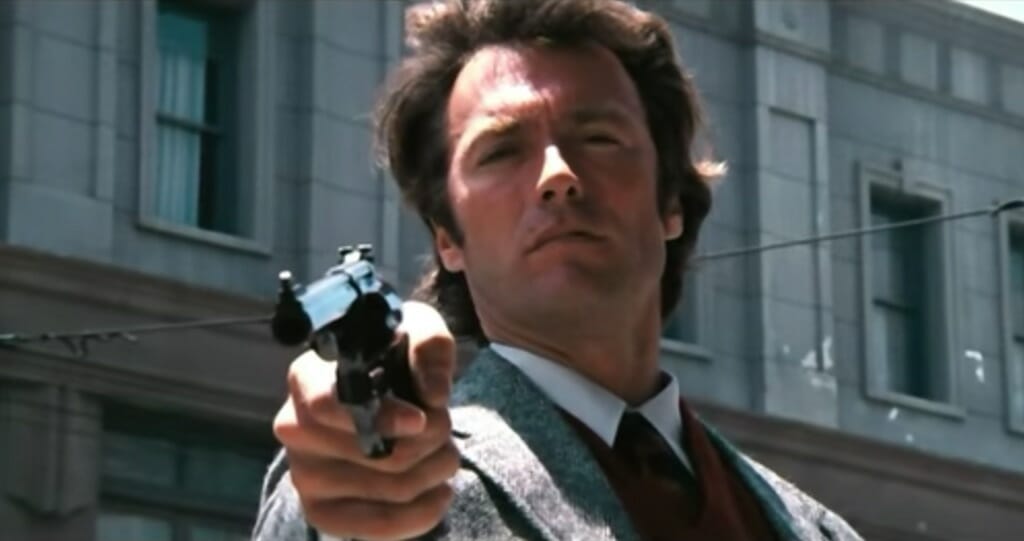 A scene from "Dirty Harry." (BadWolf / YouTube)
A scene from "Dirty Harry." (BadWolf / YouTube)
He would not have hesitated. There would be no going back for bulletproof vests or better weapons, waiting for SWAT or following police protocol to protect themselves first. Whether a school building or movie theater, a riot or any situation in which every second lost could mean another child lost, he would take the risk of entering. Risking his life to save others was doing his job. With lives at stake, he never waited for backup. He did his job.
And on Feb. 14, at Marjory Stoneman Douglas High School in Florida, he would not have squatted outside in safety while shots were being fired or ordered police to stay 500 feet away and not enter. He would not have endured 11 minutes of shooting before entering, allowing the slaughter of 17 people, plus serious injuries to at least 14 others. He would have confronted the shooter and cried out, “Over here, punk. Do you feel lucky?”
At Virginia Tech, he would have rushed in, and the death toll would not have been 32. At Columbine High School, he would have entered with a gun in one hand while using the other to sip from his cup of morning coffee. He would have entered the swirl of the Rodney King riots in downtown Los Angeles and saved that poor driver being beaten on the ground. In all cases, he would have come out the hero, muttering something about his day being made.
How did he come to exist? In the ’50s, cops were seen as people who could be depended upon to take risks to save your life. But in the revolutionary ’60s, they became political fallouts, “pigs,” tools of “fascist” leaders. As the love-ins went on, so did race riots, and crime was growing. As the ’60s ended, various police overreactions to peace marches—culminating at Kent State University in Ohio in l970—left people wondering whether the police were now political tools who could be turned loose on civilians by right-wing politicians.
In the ’70s, hippies became yuppies concerned with security from growing crime rates. The feeling now was that the police were not doing their jobs well enough and were too involved in protecting their own and polishing their self image. In 1971, police Detective Joseph Wambaugh published his first in a series of police books, many made into movies that presented a humanizing and somewhat sad view of police officers struggling to make pension and overcome personal problems, spending time at doughnut shops and calming domestic disputes.
But the same year, a script originally titled “Dead Right,” written by Julian and Rita Fink and finessed by macho screenwriter John Milius, hit the big screens. Now called “Dirty Harry,” it was supposed to star Frank Sinatra, be directed by Irvin Kershner and be set in New York City. Then Don Siegel took over as director. Sinatra pulled out, citing problems with his hand, which he broke while filming “The Manchurian Candidate.” John Wayne was considered as his replacement but was deemed too old. Steve McQueen and Paul Newman rejected the role for various reasons.
The title role was next offered to Clint Eastwood, and the rest, as they say, is history. Eastwood demanded that the locale be changed to San Francisco, his hometown. Scorpio, the film’s serial killer, was based on the Zodiac Killer, who was still on the prowl in San Francisco (he was never caught). Audie Murphy, the ultimate World War II hero, was offered the role of Scorpio, but he died in an airplane crash before deciding whether to take it. The part went to Andy Robinson.
And so, in 1971, the public picked as its newest hero a no-nonsense cop—inspector Harry Callahan, who never shied away from a shootout or hesitated to risk his life. He was an example of the pendulum swung to the other end; a case of maybe going too far, but audiences loved it. If police protocol was in his way, he ignored it, despite threats from his superiors. It was perhaps the best of Eastwood’s characters and the most dynamic screen savior equipped with quips since Sean Connery said, “Bond, James Bond.” The “Dirty Harry” movies dominated for more than a decade and have left an indelible imprint on American culture.
Callahan was like the police robot in “The Day the Earth Stood Still.” If you saw him walking down the street, you would probably get out of his way, but if your life was in danger from some armed men, you could count on him. Back then, if you were a hostage in a bank robbery, you thought someone might actually save you.
Harry wasn’t there on April 29, l992, during the Rodney King riots, which took place after a predominately white jury acquitted four police officers accused in the videotaped beating of black motorist Rodney King. Thousands took part in a four-day spree involving looting, assault, arson and murder. By the time the police, Marine Corps and National Guard restored order, there was nearly $1 billion in destruction, 55 deaths, 2,383 injuries, more than 7,000 fires and 3,100 businesses damaged. Notable during these four days of terror, however, was not so much the actions of the culprits, but the lack of police actions. No cops went into the flare-up after tempers exploded. No one protected victims inside police roadblocks. Police Chief Daryl Gates imitated the Roman emperor Nero, fiddling while his city burned.
Reginald Denny, a white truck driver, was pulled out of his vehicle at the intersection of Florence and South Normandie avenues and beaten by a mob of black gang members. News helicopters recorded the blow-by-blows, including concrete smashed on Denny’s temple while he was unconscious on the ground. Everyone watching on TV had the same response—where were the police? Rather than trying to stop this near murder in progress, they huddled out of harm’s way, reflecting a policy that protected their safety before any civilian’s. Ultimately, Dirty Harrys arrived, although none of them carried a badge—they were black neighbors who, seeing the assault live on television, came to the rescue. They risked being attacked by a frenzied mob and picked up Denny and took him to the hospital. Other non-black motorists were beaten by the same gang members, but no police officers had the nerve to intervene.
Just minutes after Denny was rescued, Fidel Lopez, a Guatemalan immigrant, was pulled from his truck and robbed at the same intersection. A rioter smashed his forehead open with a car stereo, while another tried to slice his ear off. After Lopez blacked out, the crowd spray-painted his body black. No police officer came to his aid.
No cop got in his car, crashed the barricade, drove to the site of the beatings, pulled out his Smith and Wesson Model 29 .44 Magnum and asked the gang members whether they felt lucky that day.
Seven years later, on April 20, l999, two students—Eric Harris and Dylan Klebod—entered Columbine High School in Jefferson County, Colo., to carry out a shooting massacre, killing 12 students and a teacher and wounding 24 other people before committing suicide. After a failed attempt to blow up the school cafeteria, they entered the school’s west entrance and began firing around 11:20 a.m.—outside at students on a grassy knoll and a soccer field, as well as inside the school. A deputy sheriff arrived and fired back but did not go in. Instead, he radioed for assistance. Dirty Harry also might have radioed, but he would have gone in and ended it before help arrived.
By 11:30 a.m., several deputy sheriffs and police officers arrived. They helped evacuate students; one even saw a shooter pass by a window. Law enforcement, fearing booby traps and setups, chose not go in, despite knowing that the shooting was continuing and aimed at students needing rescue. Police safety came before that of students who were brought up watching Alan Ladd movies that led them to believe police would risk their lives to protect them. A SWAT team arrived by noon but did not enter until about 2:30 p.m. It wasn’t until 3:25 p.m. that the SWAT team finally made it into the school library. By then, the shooting had long since stopped, with the self-execution of the killers. Earlier, coach Dave Sanders had posted a sign on a window: “I AM BLEEDING TO DEATH.” It was ignored. Sanders died nearly three hours later from blood loss, surrounded by about 30 terrified students. His last words were reported by a student to be “tell my family I love them.”
Inspector Harry Callahan would have finished it moments after it started. The death toll would have been limited. A coach might be alive. Who are we to protect if not our youth?
And then, in yet another April, this one in 2007, the 16th to be exact, a sociopathic student, Seung-Hui Cho, wanting to please his gods—the Columbine killers—and seek revenge on those who belittled him, killed 32 people at Virginia Tech. The first two killings occurred around 7:15 a.m. in a dorm building. The police arrived, determined it was an isolated event and treated it that way. Nice theory. But what if they were wrong? On what evidence could the investigators conclude beyond the shadow of a doubt that no killer was still on scene, stalking other students? With kids at stake, how do you not consider and protect against worst-case scenarios? It is not as though madmen haven’t gone berserk in schools, post offices and elsewhere before. Why wasn’t the school evacuated? This was a fresh murder scene. Police should have been left behind; the school should have been searched. If one cop with a true heart had stayed at the scene, dozens of people might still be alive.
As it was, around 9:20 a.m., the killer did return to shoot 30 more people, taking his time between each shot. Some reports say that rather than go in immediately, the police took the time to set up and follow their active-shooter protocols. The school says police cut the chains Cho had put on doors to prevent his victims from exiting and then went right in. I, of course, am not a witness. But it is clear that as the sound of gunshots continued, neither the security guards nor any school personnel took chances that might have saved some lives. Virginia law requires school security guards to complete a police training course. They carry weapons. April 16, 2007, was the day they were hired for. I know a Los Angeles police officer—Richard Blue—who in an earlier career in security (after getting police-training certified) entered a burning building to pull out two people who had been tied up by drug dealers. He considered it the kind of event he had taken the job for.
Sadly, there was no Dirty Harry wannabe in the Virginia Tech security force. And ironically, earlier, Virginia House Bill 1572—intended to prohibit state universities from limiting or abridging the right of a student who possesses a valid concealed-handgun permit from lawfully carrying a concealed handgun—had been introduced by Delegate Todd Gilbert. That proposed legislation, too, is dead.
That is not to say that Virginia Tech did not have its hero, a man who understood what “loco parentis” means. A professor stood at the door and held it closed so his students could climb out the windows to safety. One student tried to get him to come, but he would not budge from blocking the door. Like James Whitmore placing the kids in the sewer tunnel in the 1954 movie “Them,” he died for his heroics. He was an unexpected hero with a past he obviously learned from. Professor Liviu Librescu, 76, was a Holocaust survivor. He was all John Wayne and Clint Eastwood. Here’s to you, Professor Librescu—the public, as Paul Simon wrote, “loves you more than you will ever know. Wo-wo-wo.” Dirty Harry’s badge number 2211 now rests with you.
Your support matters…Independent journalism is under threat and overshadowed by heavily funded mainstream media.
You can help level the playing field. Become a member.
Your tax-deductible contribution keeps us digging beneath the headlines to give you thought-provoking, investigative reporting and analysis that unearths what's really happening- without compromise.
Give today to support our courageous, independent journalists.
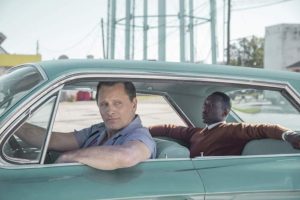
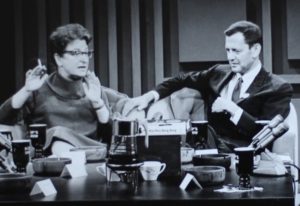
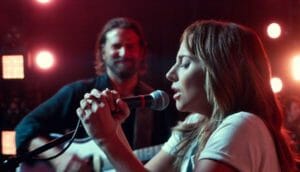
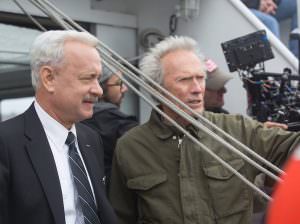

You need to be a supporter to comment.
There are currently no responses to this article.
Be the first to respond.